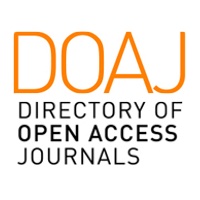APPLICATION OF PUMPKIN SAUCE IN CUPCAKE TECHNOLOGY
DOI:
https://doi.org/10.32782/2310-0478-2024-2-96-101Keywords:
product volume, moisture, baking, drying, organoleptic quality indicators, technological processAbstract
The article shows the effect of the use of pumpkin paste on the physico-chemical (baking, drying, acidity, moisture, product volume, its weight) and organoleptic (appearance, state of crumb, smell and taste) quality indicators of the cake. As a result of the conducted research, it was found that the use of pumpkin paste affects the quality indicators of the sponge cake. Thus, the highest baking indicator in the control variant is 23.8%. Application of 5–20% pumpkin paste reduces baking to 20.7–22.2% or 7–15% compared to the control; it also increases biscuit shrinkage from 0.8 to 2.2%. The highest volume indicator of the sponge cake is in the control variant, and it is 395 cm3/100 g of dough. The use of 5–20% pumpkin paste reduces the sponge cake volume index to 213 cm3/100 g of dough. The product acidity is within the norm and varies from 1.2 to 1.6 degrees. The results of the conducted research show that the use of pumpkin paste increases the weight of sponge cake from 100 g of dough; the indicators vary from 75.4 to 77 g. Crumb color when adding 5 percent of pumpkin paste remains the same as in the control, namely light yellow. In other cases, it reaches a yellowish tinge. The crumb elasticity on the control, adding 5, 10 percent of pumpkin paste remains delicate. However, with a higher addition of paste (15 and 20%), the crumb consistency turns into more moist and juicy. Having studied three samples of sponge cake with the addition of pumpkin paste, a conclusion can be drawn, that all samples have a consumer smell and taste characteristic of this species in accordance with the approved recipes, without foreign flavor and sensations. Products with the addition of 5% pumpkin paste do not have the smell and taste of the pumpkin in the sponge cake. Products with the addition of 10 and 15% pumpkin paste have the smell and taste of pumpkin, which is found by some experts. The described trend relates to the use of the largest amount of pumpkin paste. Moreover, the detection level of the smell and taste of pumpkin varied in a wide range – from its absence to a strong value.
References
Дослідження ринку бісквітів. URL: https://pro-consulting. ua/ua/pressroom/issledovanierynka-biskvitnyh-izdelij-v-ukraine-sredi-trendov-tortukrashennyj-mhom (дата звернення 29.10.2023).
Дробот В. І., Шевченко А. О. Вплив продуктів переробки гарбуза на структурно-механічні властивості тіста та якість хліба. Наукові праці Національного університету харчових технологій. 2021. Т. 27, № 3. C. 172–180.
Хомич Г. П., Ткач Н. І. Використання відходів дикорослої сировини у кондитерському виробництві. Харчова наука і технологія. 2014. № 1 (26). С. 52−57.
Khalid W., Gill P., Arshad M. S., Ali A., Ranjha M. M. A. N., Mukhtar S., Afzal F., Maqbool Z. Functional Behavior of DHA and EPA in the Formation of Babies Brain at Different Stages of Age, and Protect from Different Brain-Related Diseases. Int. J. Food Prop. 2022. Vol. 25. Р. 1021–1044.
Nadeem H., Akhtar S., Ismail T., Sestili P., Lorenzo J., Ranjha M., Jooste L., Hano C., Aadil R. Heterocyclic Aromatic Amines in Meat: Formation, Isolation, Risk Assessment, and Inhibitory Effect of Plant Extracts. Foods. 2021. Vol. 10. Article number 1466.
Nawirska-Olszańska A., Biesiada A., SokółŁętowska A., Kucharska A. Z. Characteristics of organic acids in the fruit of different pumpkin species. Food Chem. 2014. Vol. 148. Р. 415–419.
Paris H. S. Germplasm Enhancement of Cucurbita Pepo (Pumpkin, Squash, Gourd: Cucurbitaceae): Progress and Challenges. Euphytica. 2015. Vol. 208. Р. 415–438.
Ranjha M. M. A. N., Irfan S., Nadeem M., Mahmood S. A Comprehensive Review on Nutritional Value, Medicinal Uses, and Processing of Banana. Food Rev. Int. 2020. Vol. 38. Р. 199–225.
Ranjha M. M. A. N., Kanwal R., Shafique B., Arshad R. N., Irfan S., Kieliszek M., Kowalczewski P. Ł., Irfan M., Khalid M. Z., Roobab U., et al. A Critical Review on Pulsed Electric Field: A Novel Technology for the Extraction of Phytoconstituents. Molecules. 2021. Vol. 26. Article number 4893.
Ranjha M. M. A. N., Shafique B., Wang L., Irfan S., Safdar M. N., Murtaza M. A., Nadeem M., Mahmood S., Mueen-Ud-Din G., Nadeem H. R. A comprehensive review on phytochemistry, bioactivity and medicinal value of bioactive compounds of pomegranate (Punica granatum). Adv. Tradit. Med. 2021. Р. 1–21.
Rasheed H., Shehzad M., Rabail R., Kowalczewski P., Kidoń M., Jeżowski P., Ranjha M. M. A. N., Rakha A., Din A., Aadil R. M. Delving into the Nutraceutical Benefits of Purple Carrot against Metabolic Syndrome and Cancer: A Review. Appl. Sci. 2022. Vol. 12. Article number 3170.
Roongruangsri W., Bronlund J. A Review of Drying Processes in the Production of Pumpkin Powder. Int. J. Food Eng. 2015. Vol. 11. Р. 789–799.
Wang S., Lu A., Zhang L., Shen M., Xu T., Zhan W., Jin H., Zhang Y., Wang W. Extraction and Purification of Pumpkin Polysaccharides and Their Hypoglycemic Effect. Int. J. Biol. Macromol. 2017. Vol. 98. Р. 182–187.








